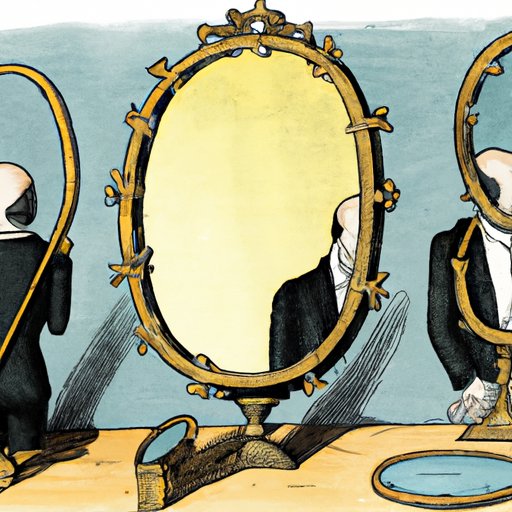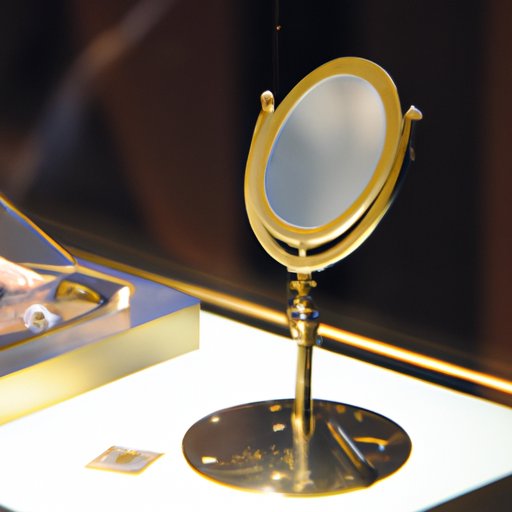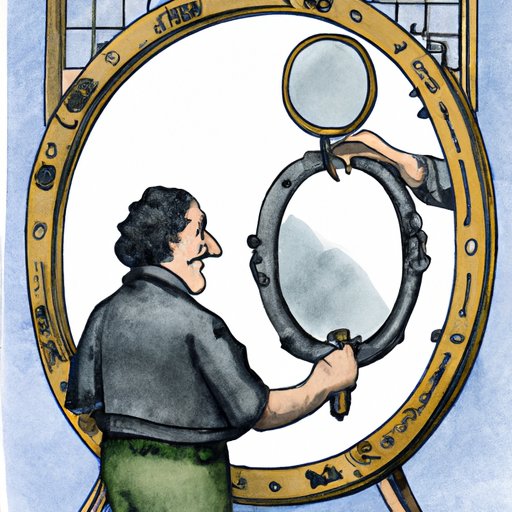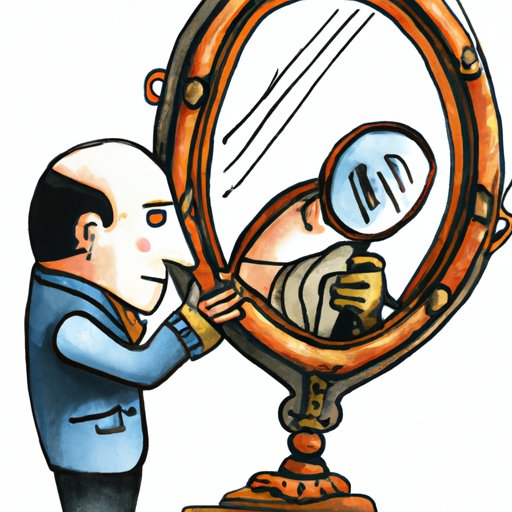Introduction
Mirrors have been around for thousands of years, and their invention has had a profound impact on society. But who exactly invented the mirror? That is the question this article seeks to answer. Through an in-depth exploration of the history of mirrors, we will uncover the origin and inventor of the mirror, as well as its impact on art, science, and everyday life.
History of Mirrors: Exploring Who Invented the Mirror
The first known use of reflective surfaces dates back to the Stone Age, when humans used polished stones to create rudimentary images. However, it wasn’t until much later that the first mirrors were created. According to historical records, the first true mirrors were made by the ancient Egyptians in around 2000 BC. These mirrors were made of highly polished copper or bronze and were used to apply makeup and observe one’s reflection.
Evidence of these early mirrors can be found in ancient paintings and sculptures, which often depict people holding reflective objects. Archeological excavations have also uncovered artifacts such as jewelry and religious items with reflective surfaces. This suggests that the concept of mirrors was already well-established by the time of the ancient Egyptians.
When was the first mirror created? Historians believe that the first true mirrors were created by the ancient Egyptians in around 2000 BC. These mirrors were made of highly polished copper or bronze and were used to apply makeup and observe one’s reflection.

The Evolution of Mirrors: Tracing the Origin and Inventor of the Mirror
In the centuries following the invention of the first mirrors, the technology behind them evolved rapidly. Ancient mirrors were made of metal, but over time, glass became the preferred material. By the Middle Ages, mirrors had become an integral part of daily life and were used for everything from personal grooming to lighting and decoration.
During the Renaissance period, mirrors became even more popular. They were used extensively in art and architecture, and the technology behind them improved significantly. For example, Venetian glassmakers developed a process for creating flat, distortion-free mirrors. This new technique allowed for the production of large, high-quality mirrors, which were then used in palaces and other grand buildings.
By the 17th century, mirrors had become commonplace in homes. The invention of the silvered-glass mirror revolutionized the industry, allowing for the mass production of mirrors at a fraction of the cost. This paved the way for modern mirrors, which are now an essential part of everyday life.

A Closer Look at the Inventor of the Mirror
So who is generally credited with inventing mirrors? It is difficult to pinpoint a single individual responsible for the invention of mirrors, as the technology evolved over time. However, some historians believe that the Roman philosopher Seneca may have been the first person to develop a method for creating flat, reflective surfaces using glass and metal.
What were the contributions of this person? According to historical records, Seneca was the first to combine glass and metal to create mirrors. He is also credited with developing the technique for producing distortion-free mirrors, which was later perfected by Venetian glassmakers. Without his pioneering work, mirrors may never have become the ubiquitous objects they are today.
An In-Depth Analysis of the Invention of Mirrors
How did the invention of mirrors change society? Mirrors had a profound impact on society, from the way people groomed themselves to the development of art and science. In particular, mirrors allowed people to see themselves as others saw them, giving rise to the concept of self-image. This had a huge impact on the way people interacted with each other, as well as on the way they viewed themselves.
What impact did it have on art, science, and everyday life? The invention of mirrors had a huge impact on art and science. In particular, it revolutionized painting, allowing artists to accurately capture a subject’s likeness in a way that had never been possible before. Furthermore, it enabled scientists to study light and optics in greater detail, leading to major advances in astronomy and physics. On a more practical level, mirrors made everyday activities such as grooming and apply makeup easier and more accurate.

How the Mirror Was Developed: Uncovering Its Inventor
Analyzing historical accounts and examining archeological evidence, it seems likely that the first mirrors were created by the ancient Egyptians in around 2000 BC. However, the exact inventor of the mirror remains a mystery. Some historians believe that the Roman philosopher Seneca may have been the first person to develop a method for creating flat, reflective surfaces using glass and metal, paving the way for the modern mirror.
Conclusion
In conclusion, this article has explored the history of mirrors and uncovered the origin and inventor of the mirror. While it is difficult to pinpoint a single person responsible for the invention of mirrors, some historians believe that the Roman philosopher Seneca may have been the first to develop a method for creating flat, reflective surfaces. The invention of mirrors had a profound impact on society, revolutionizing art, science, and everyday life.
(Note: Is this article not meeting your expectations? Do you have knowledge or insights to share? Unlock new opportunities and expand your reach by joining our authors team. Click Registration to join us and share your expertise with our readers.)
